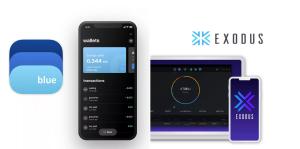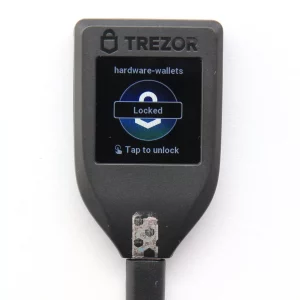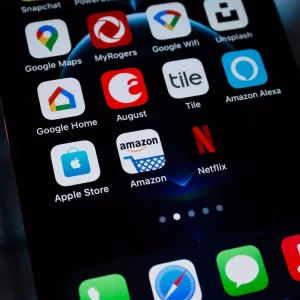What is a Bitcoin wallet? A Bitcoin wallet is a software application that allows you to store, send, and receive Bitcoin. It does this by generating and managing a pair of private and public keys. Your private key is a secret code that you should never share with anyone. It is used to sign transactions and prove that you own the Bitcoin in your wallet. Your public key is a code that you can share with others to receive Bitcoin.
What is a Bitcoin Lightning Wallet?
A Lightning wallet is a type of Bitcoin wallet that allows you to make and receive payments over the Lightning Network. The Lightning Network is a second-layer solution that sits on top of the Bitcoin blockchain. It allows for instant and low-fee Bitcoin transactions.
How a Bitcoin Wallet And Lightning Wallet Work
When you send Bitcoin from a regular Bitcoin wallet to another, the transaction is broadcast to the Bitcoin network. Miners then verify the transaction and add it to the blockchain. This process can take several minutes or even hours, depending on how busy the network is.
Lightning Wallets create temporary, off-chain tunnels for instant Bitcoin payments, bypassing the main network’s congestion. To use a lightning wallet, you first need to open a payment channel with another Lightning user. This involves locking up some Bitcoin in the channel. Once the channel is open, you can send and receive Bitcoin payments from the other user instantly and with very low fees.
Some Lightning wallets offer automatic channel management for users, opening channels to frequently used nodes and closing inactive ones for a seamless experience. Others, like the Muun wallet, prioritize convenience users by using a process called submarine swaps to handle Lightning transactions in the background. Both automatic channel management and submarine swaps are ideal for beginners and casual users of the Lightning Network. Other lightning wallets give users more control over their channels. They allow you to manually open and close channels. This is preferred by advanced users who want more control over their liquidity and routing choices.
Find out: Bitcoin Network vs Lightning Network
How to Use Bitcoin Wallet
Bitcoin wallets are generally user-friendly, but the specific steps might differ slightly depending on the wallet you choose. There are various types of wallets available. Popular options include mobile wallets, desktop wallets, hardware wallets, and web or browser wallets. Here’s a general guideline to get you started:
Once you’ve chosen a wallet, download and install it according to the provider’s instructions. This might involve visiting their app store or website. During setup, you’ll likely be prompted to create a new wallet or import an existing one (if you have one). New wallets will generate a seed phrase, which is a crucial backup for recovering your Bitcoin if you lose your device. Write down this seed phrase and store it securely offline.
Your wallet will provide a unique Bitcoin address. You can share this address with anyone to receive Bitcoin payments. When someone sends Bitcoin to your address, the amount will be reflected in your wallet balance. To send Bitcoin, locate the “send” option in your wallet. You’ll need the recipient’s Bitcoin address and the amount you want to send. Some wallets might also allow you to scan a QR code containing the address. After confirming the details, your transaction will be broadcast to the Bitcoin network. Transaction fees might apply depending on network congestion.
How to Use Bitcoin Lightning Wallet
There are various Lightning wallets available for download on Android and iOS, and even hardware wallet such as OneKey. Once downloaded, follow the in-app instructions to create a new wallet, which typically involves writing down a recovery seed phrase, similar to a regular Bitcoin wallet.
Funding your Lightning wallet is essential. You’ll need to send Bitcoin from an exchange or another wallet that supports Lightning transactions to your Lightning wallet address. Some wallets offer automatic channel management. You might not need to do anything further if your chosen wallet has this feature and you plan to use it. Other wallets needs you to manually handle the channels.
Once your wallet is set up and funded, you can send and receive Bitcoin through the Lightning Network. To send, many wallets allow generating a Lightning invoice, a QR code, or Lightning address. The recipient scans the QR code or enters the invoice or address into their wallet to complete the payment. To receive, your wallet will typically have a dedicated “Receive” section where you can generate a Lightning invoice or display your Lightning address (similar to a QR code) for others to send payments.
Lightning Wallet vs Bitcoin Wallet
The main differences between Bitcoin wallets and Lightning wallets are as follows:
- Speed: Bitcoin wallet transactions can take several minutes or even hours to confirm, while Lightning wallet transactions are instant.
- Fees: Bitcoin wallet transactions can have high fees, while Lightning wallet transactions have very low fees.
- Capacity: The Bitcoin blockchain can only handle a limited number of transactions per second, while the Lightning Network can theoretically handle millions of transactions per second.
Lightning Address vs Bitcoin Address
Bitcoin addresses are used for direct interactions with the main blockchain. Transactions to these addresses are settled on the blockchain itself. In contrast, Lightning addresses are user-friendly, human-readable addresses, often resembling email addresses.
Bitcoin wallets offer support for distinct address formats, including SegWit, Native SegWit (Bech32), and Legacy. Lightning address is a new method of sending and receiving bitcoin payments that aims to make the process as simple and straightforward as sending an email, e.g, [email protected], [email protected], and [email protected]. Wallets supporting Lightning address include Wallet of Satoshi, Phoenix wallet, Swapee, and Alby.
Read more: What is a Lightning address?
Benefits and Drawbacks of Bitcoin Wallets
Bitcoin wallets offer a unique blend of security and privacy because of the decentralized and transparent nature of the blockchain. It is incredibly difficult for hackers to steal your funds, as compromising the entire blockchain network would be a near-impossible task. However, this security comes at a cost. Bitcoin transactions can be slow, particularly during periods of high network traffic, which can be an inconvenience in case you need urgent access to your funds. Moreover, Bitcoin transactions can incur high fees, particularly when the network is busy. These fees can vary depending on the size and urgency of your transaction.
Benefits and Drawbacks of Lightning Wallets
Bitcoin transactions are known for their inherent slowness, which can be a hurdle for those seeking quick and convenient transfers. This is where Lightning wallets come in as a faster alternative. With Lightning, payments happen in a flash, making it a game-changer for online purchases and everyday transactions.
However, the speed advantage comes at a cost. Lightning technology is still under development, and its adoption by merchants is not yet widespread. Additionally, finding a user-friendly Lightning wallet can be challenging, as the current options tend to be more complex than traditional Bitcoin wallets.
On the security front, while Lightning inherits the robust security of the Bitcoin blockchain, it’s important to note that its infrastructure isn’t quite as decentralized. The Lightning Network relies on specific nodes to facilitate transactions, which introduces a degree of centralization not present on the main chain.
Not only are Lightning transactions faster, but they are also significantly cheaper than traditional on-chain transactions. This is due to the way Lightning channels operate, allowing for multiple transactions to occur off-chain, minimizing the need for costly blockchain confirmations.
Best Bitcoin Lightning Wallets
Many wallets support both Bitcoin and Lightning transactions. Here are some of the best lightning wallets you can use for faster and cheaper Bitcoin transactions:
Bitcoin Wallet vs Lightning Wallet: Summary
The following table provides a quick comparison of Bitcoin wallets and Lightning wallets:
| Feature | Bitcoin Wallet | Lightning Wallet |
|---|---|---|
| Transaction Speed | Slow (several minutes to hours for confirmation) | Instant |
| Transaction Fees | High (can vary) | Very Low |
| Network Capacity | Limited | Theoretically millions per second |
| Address Type | Bitcoin Address | Lightning Address (user-friendly, human-readable) |
| Security | Very Secure (decentralized blockchain) | Secure (inherits from Bitcoin, but less decentralized) |
| Channel Management | N/A | Manual or automatic |
| Drawbacks | Slow, Expensive | New technology, Less adopted by merchants, Complex wallets |
| Use Case | Holding Bitcoin (HODLing), Large transactions | Everyday transactions, Micropayments |
Lightning Wallet vs Bitcoin Wallet: Should I Use the Bitcoin Network or the Lightning Network?
Choosing the right wallet for your Bitcoin needs can feel daunting, especially with the emergence of the Lightning Network. Both Bitcoin wallets and Lightning wallets offer unique advantages and disadvantages, as we have pointed out in this article.
Traditional Bitcoin wallets function like bank accounts, storing your Bitcoin on the main blockchain. Transactions are recorded publicly, taking time for confirmation and incurring potentially high fees depending on network congestion. However, they are ideal for large transactions, long-term storage, and situations where the recipient does not have a Lightning wallet.
Lightning Network wallets provide an alternative approach. They enable fast and low-fee Bitcoin payments through the Lightning Network, a “second layer” on top of the main blockchain. Transactions are instant and off-chain, which reduces congestion and transaction times. They are perfect for micropayments and everyday transactions because the fees are exceptionally low. While security is robust, it relies on the Lightning Network’s infrastructure, which is not as decentralized as the main blockchain. These wallets shine for quick and affordable transactions, smaller amounts, and scenarios where both users have Lightning wallets.
Imagine the Bitcoin network as a busy highway where everyone verifies and records transactions, leading to delays and congestion. The Lightning Network, on the other hand, acts like a network of side streets directly connecting to the highway, allowing smoother and faster transactions without affecting the main road.
In the end, the best choice depends on your specific needs. Do you need speed and affordability? Opt for a Lightning wallet. Sending a large amount? A Bitcoin wallet is safer. If you need to send Bitcoin to someone who does not have a Lightning wallet, then you will need to use the Bitcoin network. But don’t be limited – many wallets offer both Bitcoin and Lightning functionalities.



























